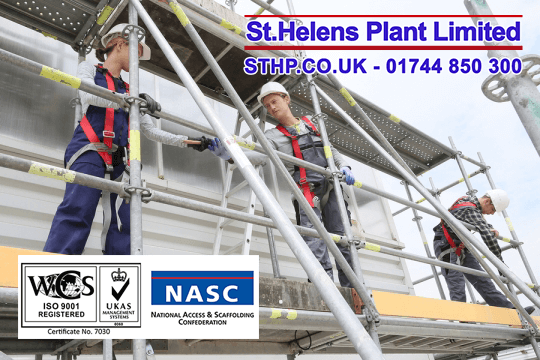There is no doubt, working at height carries high risk whether you’re working from low-level access, podiums steps, aluminium scaffold towers or scaffolding.
A lot can quickly go wrong when working from scaffolding, take for example Christmas Eve 2009, five migrant workers were working a 13 storey high suspended scaffold. As they were working the platform snapped.
Four of the workers fell to their death, with the fifth worker left seriously injured. Needless to say, an investigation was conducted and charges for criminal negligence causing death were filed against Metron Construction Corp and three other individuals.
The risk to those working at height and those in proximity is increased even more when basic safety measures are overlooked.

1 – Condition of the Scaffolding in Use – it’s important to ensure whether you’re a scaffolder or the owner of the company. That all scaffolding is in a fit for purpose condition and suitable for the task at hand.
Scaffolding accidents and fatalities have been known to have been caused by defective scaffolding that no longer has the structural ability or strength to do the job it was once intended to do. Scaffolding can “appear” to be in good working order, however scaffolding only has a certain lifespan. Through time, general wear and tear and environmental conditions scaffolding requires repair and reconditioning.
That said, scaffolding can only be repaired so many times, before it is no longer structurally sound and fit for purpose.
It’s vital scaffolding companies know where their scaffolding was manufactured, what safety standards it conforms to, alongside whether it has been repaired or reconditioned and the age of the equipment.
2- Understand and Respect the Load Capacity – Failure to know and respect the load capacity of scaffolding is one of the most  common things that go wrong at the design stage. Knowing the load capacity doesn’t just mean materials and equipment on the scaffold.
common things that go wrong at the design stage. Knowing the load capacity doesn’t just mean materials and equipment on the scaffold.
The weight of workers also needs to be accounted for and on so many occasions is overlooked.
When calculations and understanding of a scaffolds load capacity are miscalculated, scaffolding will collapse. Make sure at the design stage the weight of all all materials, workforce and equipment are fully accounted for and accurately calculated.
3 – Inspect and Maintain – Scaffolding once erected and in place, regular inspection should be carried out. Adopting a scaffold tag system can help significantly help in hazard management and efficient scaffold inspection. Using a scaffold management system is not required by UK law, however it’s worth noting; UK legislation does require all scaffolding contractors, responsible parties or companies to have a full risk assessment and scaffold inspection procedure.
Essentially, the law states before scaffolding is onsite and erected a full and complete risk assessment must be conducted.
Once scaffolding is erected, a scaffold inspection procedure must also be in place.
4- Ensure Scaffolding is Secured and Stable – When scaffolding is in place to permit access to conduct works at height, it must be properly braced or tied to the building, to ensure no movement and prevent the scaffold becoming dislodged and as a result unstable.
Scaffolding depending on type, has various types of locking systems or brace retentions. Alternative nails or miscellaneous parts must not be used instead of the correct retention parts as supplied and designed by the scaffolding manufacturer.
5 – Training and Competency – All personnel either erecting, dismantling or working on scaffolding must be fully trained and qualified to do so. Scaffolders must have undergone the correct training and also be fully registered and approved by the CITB.

Scaffolding Safety Supplies and Equipment
St Helens Plant manufacture and supply a wide range of scaffolding safety supplies and equipment. Ranging from fall prevention solutions to edge protection systems, alongside supplying various scaffolding safety components and accessories.
For customers looking for scaffold repair and reconditioning or in need of a bespoke manufactured scaffolding safety solution to meet the demands of your next project, contact St Helens Plant on – 01744 850 300 or email us at – info@sthelensplant.co.uk




















